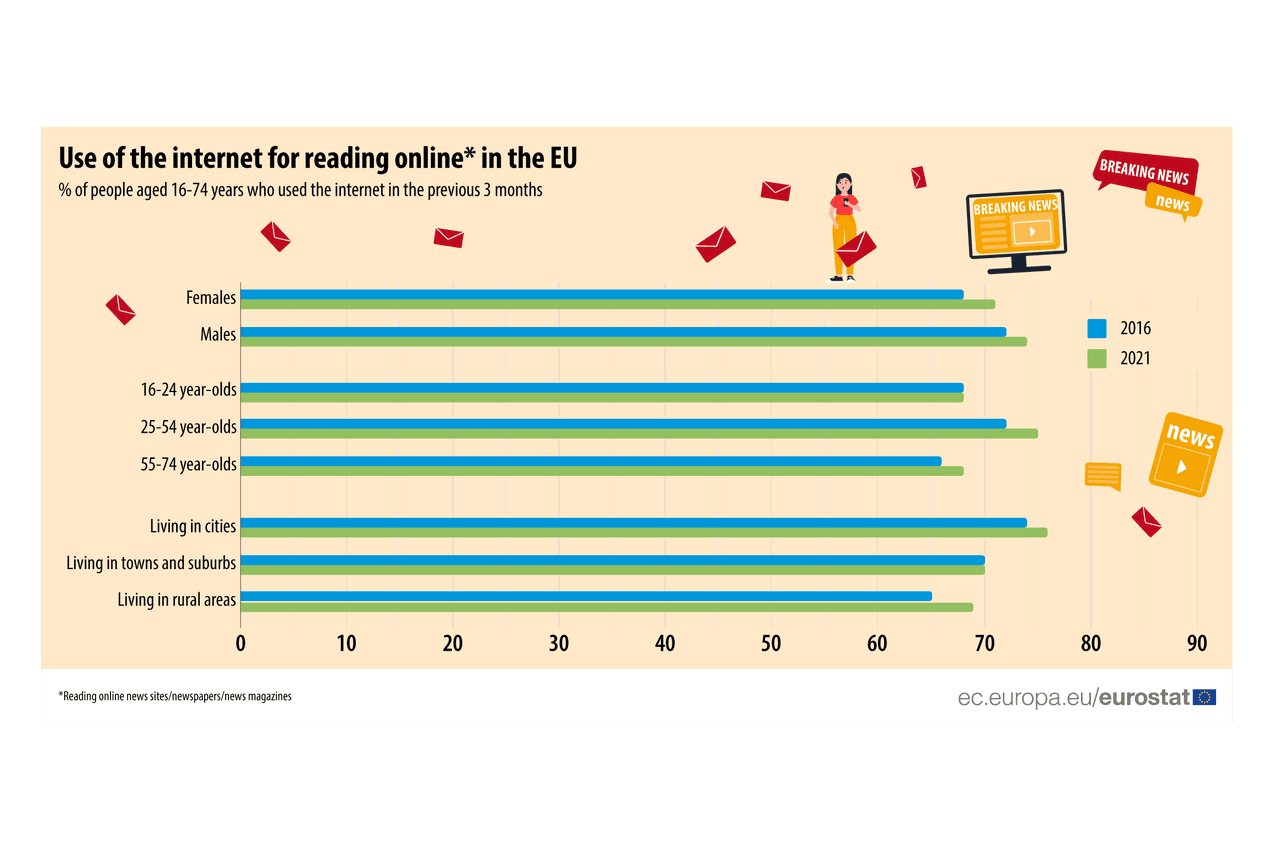A study by the EU statistics agency Eurostat shows that in Europe the rate of people taking to online sources for their news has increased by 2 percentage points from 2016, reaching 72% in 2021. Luxembourg was placed just below the average for the analysed countries with 71%. The United Kingdom was not part of the survey, but statistics from Turkey and EU candidate countries North Macedonia, Montenegro were included.
Nearly nine out of ten people (89%) in the EU aged between 16 and 74 years old used the internet at least once withing the three months prior to the survey. Eurostat cites reading online news as one of the most popular uses for that age group.
The highest percentage of internet users reading online news sites was recorded in Finland (93%), Lithuania and Czechia (both 92%) and Croatia and Greece (both 90%). Romania (59%), Germany (62%), France (63%) and Belgium (67%) registered the lowest scores.

Eurostat’s study estimates that, on average, men were more likely to use the internet for reading news than women (74% compared to 71%). Photo: Eurostat
Eurostat’s study estimates that, on average, men were more likely to use the internet for reading news than women (74% compared to 71%). Reading online news sites, newspapers or news magazines was the most popular among the age range of 25-54 years (75%). Both this age group and the 55-74 group (68%) registered increases of 3pp and 2pp, respectively.
